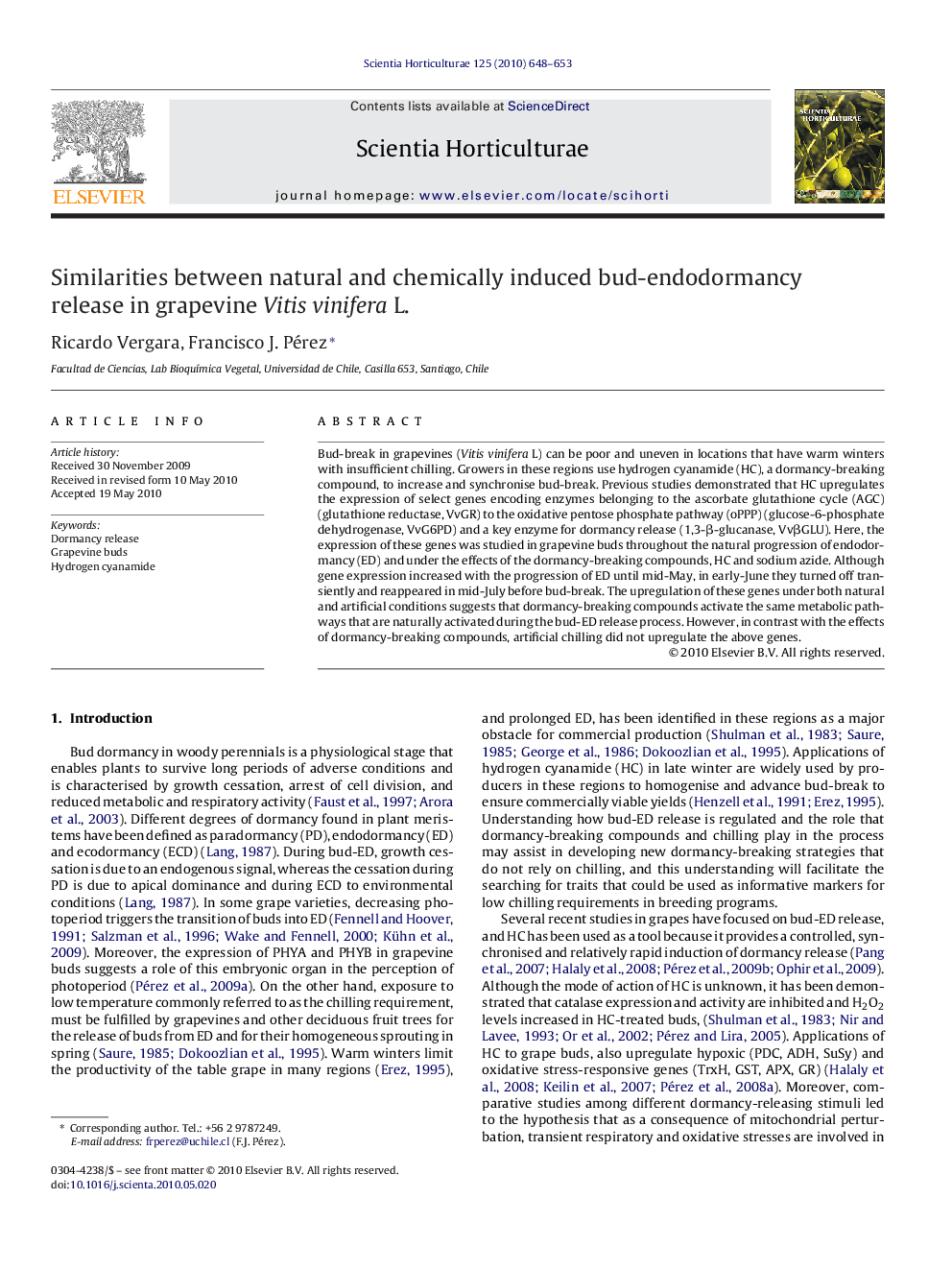| کد مقاله | کد نشریه | سال انتشار | مقاله انگلیسی | نسخه تمام متن |
|---|---|---|---|---|
| 4568582 | 1331306 | 2010 | 6 صفحه PDF | دانلود رایگان |

Bud-break in grapevines (Vitis vinifera L) can be poor and uneven in locations that have warm winters with insufficient chilling. Growers in these regions use hydrogen cyanamide (HC), a dormancy-breaking compound, to increase and synchronise bud-break. Previous studies demonstrated that HC upregulates the expression of select genes encoding enzymes belonging to the ascorbate glutathione cycle (AGC) (glutathione reductase, VvGR) to the oxidative pentose phosphate pathway (oPPP) (glucose-6-phosphate dehydrogenase, VvG6PD) and a key enzyme for dormancy release (1,3-β-glucanase, VvβGLU). Here, the expression of these genes was studied in grapevine buds throughout the natural progression of endodormancy (ED) and under the effects of the dormancy-breaking compounds, HC and sodium azide. Although gene expression increased with the progression of ED until mid-May, in early-June they turned off transiently and reappeared in mid-July before bud-break. The upregulation of these genes under both natural and artificial conditions suggests that dormancy-breaking compounds activate the same metabolic pathways that are naturally activated during the bud-ED release process. However, in contrast with the effects of dormancy-breaking compounds, artificial chilling did not upregulate the above genes.
Journal: Scientia Horticulturae - Volume 125, Issue 4, 26 July 2010, Pages 648–653